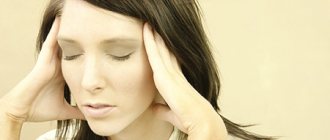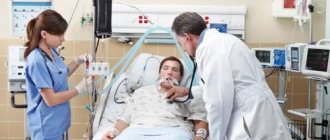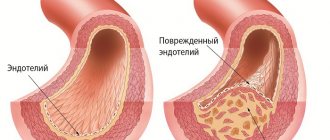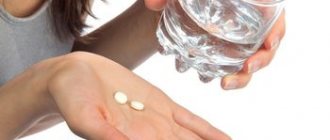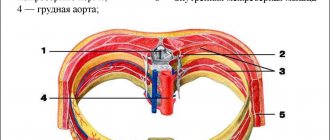Symptoms
The list of typical pathological manifestations during panic attacks is extremely wide. Signs can be physiological, mental and emotional.
Characteristic manifestations:
- cardiopalmus;
- noise in ears;
- breathing problems;
- a feeling of unreality of what is happening;
- sweating;
- nausea;
- weakness in the limbs or their numbness;
- discomfort or pain on the left side of the body (mainly in the sternum, but the localization may be wider);
- fear (of death, mistakes, punishment, loss of reason).
Uncontrollable horror is not always accompanied by all of the listed symptoms. Some may be absent or replaced by other pathological manifestations. For example, confusion of thoughts, obsessions, a feeling of unreality, abdominal pain, temporary loss or deterioration of vision.
Reference! Sometimes the person attacked by fear is shaken by trembling, weak or strong, localized in one part of the body (arms, legs, fingers) or covering the entire torso. The manifestation in some cases interferes with articulate pronunciation and impairs motor function.
The intensity of symptoms depends on many factors, including the serial number of the attack. Usually the very first panic attack is the hardest. During this process, a person may experience a hypertensive crisis. The patient may lose consciousness.
At the end of the attack, which lasts on average 15-20 minutes, weakness sets in. Other possible manifestations:
- detachment;
- decreased response;
- problems with concentration;
- body aches;
- drowsiness.
In severe cases, the crisis ends with a strong urge to urinate, reducing the time between forced visits to the restroom.
VSD in human life
A person without obvious symptoms of any disease simply becomes ill. Your head starts to hurt, you have panic attacks, even fainting, etc. This is how the feeling of hatred towards yourself or the world around you works.
When the parents of such a person often criticized and scolded him in childhood, he gets used to it and considers it the norm. And he forces his brain to make sure THIS appears in his life again. It is as if he attracts bad things to himself, since he has not learned to live without them. This is the paradox that occurs.
As a rule, this category includes the majority of benevolent people who do not want to lose, under any circumstances, their face and “extinguish” all conflicts. At the same time, all the hatred that arises is turned towards oneself, or rather, into oneself. Often, such people cannot stand it when they are praised, cared for, loved. They believe that they simply are not worthy of it.
At the same time, they “wind up” themselves and are mentally destroyed, thereby “accelerating” their VSD to the fullest. And things go to extremes. Sometimes they even stop leaving the house due to severe attacks of panic attacks and fear. Everywhere they see horrors and nightmares. - What if I faint? - What if they don’t have time to call an ambulance? - What if someone catches me on the way? - What if I wet myself on the way?.. And so on.
Such people, when they see a doctor, undergo a lot of examinations, but they do not find a specific disease, so, some echoes... And the doctor makes a diagnosis - VSD.
And if a person had a dysfunctional childhood, then vegetative-vascular dystonia already comes with him. The neural network created in childhood, accustomed to living in an aggressive environment, accompanies him everywhere. And the person automatically begins to artificially create for himself the same hostile environment as in childhood.
Unfortunately, these circuits can be very difficult to break. After all, one simple law always works in the world: Everything that is created and takes place wants to live and prosper further, therefore it is ready to fight fiercely for its existence. Also, any created habit (neural circuit) fights for its existence.
It is sometimes very difficult to “cure” VSD, since we love habits and often do not want to part with them ourselves. Living under stress is also a habit. And the more difficult a person’s childhood was, the more stable this habit will be maintained in his adult life. Moreover, a difficult childhood does not mean the economic side, but the psychological one (humiliation, shame, undeserved punishment, etc.)
We suggest you familiarize yourself with How to treat cardiac electrosystoles
But how will this person create this aggressive environment, finding an enemy within himself or in society, this does not change the essence. There is hatred, and neuronal cells that “contain” and “process” this hatred are responsible for it.
As a rule, people with VSD do not understand what is happening to them? Often they can’t even live without it. They enjoy worrying, looking for a threat, waiting for trouble, looking for conflict... They live by it.
But from such psychological overload the body gets tired and fails. This causes physical health problems.
And the worst thing is that such people don’t even imagine what a calm and measured life is. And they don’t understand at all and don’t know how to live THIS way.
Causes
Panic can manifest itself against the background of a somatic or mental illness, a stressful or emergency situation. With a bodily origin, physical manifestations dominate, and psycho-emotional ones do not appear so clearly.
Somatic reasons:
- consequences of a heart attack;
- ischemic disease;
- pregnancy;
- adrenal tumor;
- thyrotoxicosis;
- the beginning of menstruation;
- vegetative-vascular dystonia.
If the primary attack is caused by the listed factors, then subsequent ones can simultaneously have both somatic and psychological background. The patient knows that he may have a panic attack, worries about it, and sets himself up for a relapse.
Awareness of a tendency to react inappropriately to stimuli can develop into confidence in one’s own illness. If a person takes strong drugs or is in a hospital for a long time, then his belief in incurability and limited capabilities is fueled. This results in a vicious circle in which the individual experiences severe anxiety about his anxiety.
In situations where the root cause of panic lies in mental illness, emotional symptoms dominate over physical ones. Pathologies that can provoke causeless acute anxiety:
- phobias;
- depression;
- traumatic first sexual experience;
- violation of social adaptation;
- endogenous mental illnesses.
The tendency to panic attacks can develop against the background of toxic family relationships and improper parental behavior. If the mother and father are demanding, critical, not ready to make concessions, and evaluate every action of the child, then he will not be able to adequately perceive himself and the world around him. The possibility of making a mistake will cause trepidation, indecision, and timidity. In severe cases, the very need to perform an act and make an independent choice becomes a reason for uncontrollable tides.
Manifestations of panic attack symptoms during VSD
Unfortunately, with VSD, panic attacks are almost inevitable.
The difficulty is that it is impossible to predict them and prepare for them in advance. This happens on a psychological level.
A provocateur of VSD can be severe physical, mental or emotional stress. A little excitement gradually develops into real panic.
An attack is often accompanied by the following symptoms:
- dizziness;
- Strong headache;
- fainting.
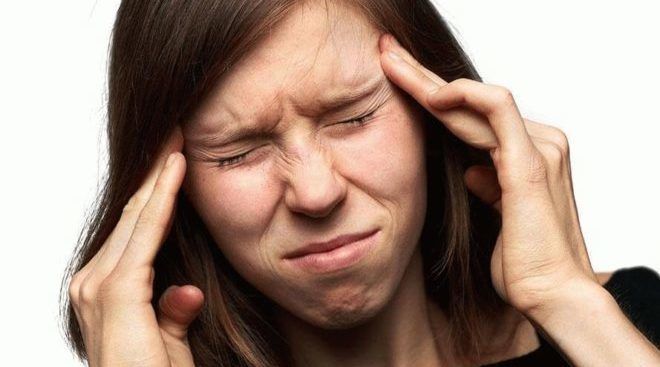
Headache
Interestingly, patients with VSD often pay increased attention to their health. These patients are willing to carry out all kinds of clinical examinations for years to diagnose suspected diseases.
Due to an unstable psycho-emotional state, it is difficult for such people to realize that their diagnosis is only VSD. This is due to the symptoms of a panic attack.
- On the part of the heart - painful sensations. They are caused not by disturbances in the functioning of the heart muscle, but by the patient’s excessive worries about his life. Heart pain during VSD causes a person to worry more and more, which subsequently develops into real attacks of fear. They will only intensify and become more frequent over time. The attack is relieved with any sedative.
- Pulse and breathing are often severely disturbed, even without physical exertion. Patients note that during an attack they often lack air. Sometimes it feels like suffocation is about to occur. Because of this, the pulse increases greatly and it seems that the heart will jump out. This manifests itself as VSD in a state of fear.
- Bodily sensations include frequent tremors, sudden changes in body temperature and pressure, numbness of the limbs and increased sweating, severe atypical headaches.
Knowing the main characteristics of a panic attack during VSD, a person will be able to pull himself together in time, preventing the attack from developing to a critical level. In such situations, it is important to avoid unnecessary actions and try not to make any hasty decisions until a feeling of calm comes.
VSD – vegetative-vascular dystonia, as a cause of panic attacks
Extraneous tinnitus, migraine, impaired thermoregulation, numbness of the limbs are just some of the pathological manifestations characteristic of a disorder of the autonomic nervous system. This is a systemic disease, so its symptoms spread throughout the entire body. The full list of symptoms is divided into 7 categories:
- change in sensitivity;
- psycho-emotional pathologies;
- digestive disorders;
- breathing problems;
- neurological pathological manifestations;
- problems with the heart and blood vessels;
- panic attacks.
Unreasonable anxiety during VSD is an acute reaction to irritating factors that do not pose a threat to life. The condition occurs due to violations of the natural coordination of the departments of the visceral system. The stronger the disorder, the more the relationships are disrupted, the more deviations are observed during a panic attack.
Types and symptoms of neuroses and their characteristics
The manifestation of an attack is characterized not only by the presence of feelings of fear and anxiety, but also by other symptoms. The patient experiences:
- increased nervous tension;
- feeling of lack of air;
- body tremors and chills;
- numbness of the limbs;
- heavy sweating:
- chest pain;
- presence of a lump in the throat.
The development of anxiety attacks is often accompanied by headaches, nausea and vomiting. Some patients experience dizziness and disorientation in space.
Sometimes the appearance of phobias is noted (for example, a person is afraid to go outside). There are many symptoms of autonomic disorders, and they are individual in nature.
Disturbances in the functioning of the autonomic nervous system can be accompanied by various symptoms; the course of the disease occurs differently in all people.
However, we can highlight the most common signs of neurosis in VSD, among them:
- constant worry, anxiety, fear for your life;
- frequent and sudden changes in mood;
- emotional weakness, resentment, tearfulness and self-pity;
- closedness, fear of society;
- frequent manifestations of aggression, short temper;
- memory impairment, absent-mindedness;
- malaise, lethargy, depression.
In addition to all of the above, patients with VSD and manifestations of neurosis may also experience symptoms that affect their physical condition.
Also, if the autonomic nervous system does not work properly, there may be impaired coordination of movements, fear of loud sounds, sensitivity to bright light and decreased libido.
The root causes of VSD:
- violation of the anatomical integrity of the musculoskeletal system;
- birth injuries;
- spine surgery;
- infectious diseases;
- hormonal disbalance;
- intrauterine pathologies.
The condition develops not only for reasons of traumatic, infectious and perinatal nature, but also after severe stress. Sometimes VSD occurs not as a result of the operation itself, but because of a person’s attitude towards surgery and his behavior during the recovery period.
Which doctor should I contact for panic attacks?
Panic attacks belong to the area of anxiety mental disorders and are treated by psychotherapists. Before starting the treatment process, you need to be sure that the patient does not have diseases of the cardiovascular system. If any are found, this does not mean that the services of a psychologist are not needed. It’s just that a person will solve not one, but several problems.

Unfortunately, this disorder is not always addressed to specialists. In the initial period, they may occur rarely, and in the period between crises the patient experiences only a slight vague fear that the attack may recur. Another reason is the behavior of the heart. The observed tachycardia misleads people. They think that they were afraid of what was happening on the physical level. Heart rate, lump in throat. Fear is beginning to be seen as a natural reaction to cardiology problems.
In this case, people don’t even think about which doctor treats panic attacks, because they don’t even suspect that they suffer from this mental disorder.
In order to understand what came first - fear or heartbeat, you need the ability to work with subtle emotions, which is not available to all people. As a result, they go to doctors who deal with the cardiovascular system, but they do not identify any problems with the heart. However, this does not mean that all patients remain without a diagnosis. Most often, it is still diagnosed and it becomes traditional vegetative-vascular dystonia. No one really knows what this is all about. It is clear that something connected not only with the nervous system, but also with psychosomatic forms of expression of neuroses.
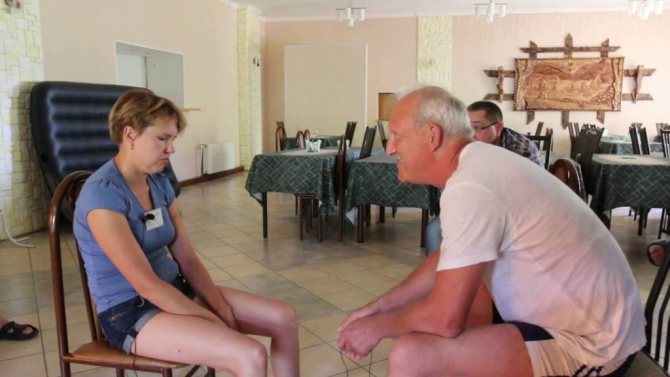
Patients are treated for a long time, but the treatment does not meet expectations. Terms are not argued about, they are agreed upon. Let's assume that panic attacks are some kind of vegetative crisis. However, how does it happen that antidepressants and other drugs that are needed in the treatment of neuroses and mental disorders are effective? And not only this, but also psychotherapy in terms of treatment by talking and practicing certain purely psychological methods?
All this suggests that if the question of who to contact during panic attacks has become urgent, the choice should be made among specialists in medical psychology.
Anxiety disorders, which include PA, rarely occur in splendid isolation. They may be associated with agoraphobia or depression. It may be that the person has experienced a state of panic several times, and there are no special problems. However, taken together, these disorders can extremely seriously reduce a person’s quality of life.
You shouldn’t think for a long time about which doctor to see if you have panic attacks. This is a psychotherapist, and his services, since we are talking about a disease, can be free.
In some cases, especially when it comes primarily to the choice of a drug treatment regimen, a psychiatrist can also play such a role.
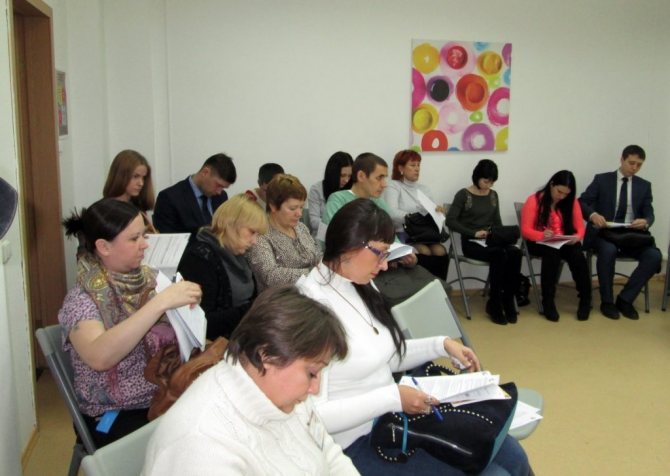
Usually the most severe form is treated within 1-2 months. It is PA that is not a reason for hospitalization, but it may be suggested due to the presence of other abnormalities. Taking antidepressants can last for a year or even longer. There is no need to fear this. They not only do not interfere, but help mental activity and allow you to maintain performance at the proper level. The same cannot be said about tranquilizers. Treatment of panic attacks with them should be treated with great caution due to addiction and side effects.
Source: psycholekar.ru
Methods for treating panic attacks
The question is within the competence of narrow specialists:
- neurologist;
- psychologist;
- psychotherapist;
- osteopath.
Each specialist practices his own treatment methods. The psychologist corrects the condition by instilling the harmlessness of a panic attack (it is not fatal), identifying psychological prerequisites and changing the patient’s attitude towards himself, towards the current life situation or towards moments in his biography.
A doctor of this profile issues guidance on how to get out of a pathological condition, and practices the techniques in practice.
Prevention of panic attacks and VSD
The basis for preventing panic attacks is timely treatment of the diseases that provoke the attack. The patient needs to normalize his work and rest schedule, not overwork, and avoid stressful situations.
It is very important to learn self-control methods that help get rid of negative thoughts and bad memories. If an attack of irritation hits, you can, for example, kick the pillow well or cry in order to release unnecessary emotions.
Stabilization methods:
- Breathing exercises. You need to take a comfortable position and switch to abdominal breathing. Inhale through the nose, and exhale slowly through the mouth.
- Directed distraction. You need to focus on a specific thought, idea or goal. Goal setting, as a method of combating anxiety, is also used not during a seizure. During therapy, the psychologist asks you to make a list of small goals achievable in one step. Success in every endeavor is rewarded and increases self-esteem.
- Eating food or drinking water. The most effective way is to open the package or bottle and then slowly consume its contents. The patient should fully concentrate on performing the action, solving the problem.
- Repetition of memorized text. The eyes are closed and the words are spoken out loud.
- Long smile. After 3-5 minutes of artificial muscle tension, your mood improves and anxiety goes away.
A neurologist and psychotherapist practice drug therapy. The patient is prescribed tranquilizers. Drugs in this group reduce the severity of psychosis, normalize sleep, lower temperature, and relax airways compressed by spasms. They act 15-30 minutes after administration.
Due to the lack of immediate effect, medications in this group do not help survive an attack. A panic attack lasts on average 15-20 minutes, and tranquilizers begin to stabilize the condition only 15-30 minutes after use. Their use is not aimed at stopping a seizure, but at preventing and weakening it.
Note! Doctors do not provide information about the delayed effect of tranquilizers to all patients, but selectively. Reason: if panic attacks are caused by mental factors, then the state of health can be normalized by a placebo. A person who is not familiar with the mechanism of action of tranquilizers is able to feel better only by taking a specific action - taking the medication.
In addition to tranquilizers, the following medications are prescribed:
- vitamins (groups A, P and E, magnesium B6);
- tablets that normalize cerebral circulation by dilating blood vessels (Actovegin, Eufellin);
- nootropics (Piracetam, Phenibut);
- antioxidants (Glycine, Mixedol).
Important! Uncontrolled use of these medications is unacceptable. Only the attending physician, based on medical history, is able to select the correct dosage and determine the required duration of administration.
Drugs for VSD and PA
A neurologist for VSD will prescribe medications only after examination. As a rule, the patient is prescribed a standard set of blood tests, a cardiogram must be done, and for special indications an MRI of the brain is prescribed to rule out the presence of a tumor.
After clarifying the diagnosis (excluding other diseases), the doctor will prescribe medications. Antidepressants are ways to relieve symptoms and treat diseases such as vascular dystonia with panic attacks. However, you need to take medications carefully, according to the scheme: gradually increase the dose, and at the end of treatment gradually reduce it, otherwise withdrawal syndrome will occur and the condition will worsen.
Tranquilizers, unlike antidepressants, need to be taken not in courses, but occasionally. They will relieve fatigue and irritation, nervous tension. The most gentle tranquilizer is glycised. It is not addictive. However, with diseases such as vegetative-vascular dystonia and panic attacks, the same medicine does not help everyone; much depends on concomitant diseases and age.
Beta blockers are medications that block the release of adrenaline into the blood, which will prevent panic attacks from developing too much.
If you consider that some medications for VSD provoke headaches, irritability, decreased libido, memory loss and other adverse reactions, then you can agree to try to recover without medications. There is a risk of starting the disease and not preventing the situation when it becomes chronic and cannot be treated.
Osteopathy as one of the methods of treating panic attacks
An osteopathic doctor does not practice drug therapy and views panic attacks not as a separate disease, but as a sign of a systemic disease. Therefore, his task is not to relieve symptoms or increase the time period between seizures, but to eliminate the root cause of the condition.
In an osteopath's office, the problem of anxiety disorders is solved by using hands to influence the musculoskeletal system. Using precisely controlled movements of varying intensity, the doctor eliminates spasms and restores communication between parts of the autonomic nervous system.
Treatment is carried out after diagnosis. During the inspection, the following techniques are used:
- Passive tests. The subject is asked to relax. The receiving doctor independently changes the position of the patient’s limbs and monitors the angle of inclination, the elasticity and plasticity of the muscles.
- Active research. The visitor assumes poses in which pathological changes in the skeleton, sagging and ptosis of the muscles become noticeable.
Additionally, load tests and tensile tests are used. To understand the condition, a conversation is conducted, test results are also studied and a psycho-emotional portrait is drawn up. When describing a person, take into account:
- gestures;
- intonation;
- speed, tempo of speech;
- lexicon;
- gait.
After a comprehensive examination, a treatment program is drawn up. During therapy, the specialist uses 1 or several techniques. Regardless of the chosen approach - complex or monotherapy - the main emphasis is on craniosacral technique.
How to prepare in advance for a panic attack
If you have a disease such as panic attacks or vegetative vascular dystonia, you must keep a diary. In it, write down the situation in which the PA occurred, its duration, symptoms, sensations. Subsequent analysis of the records will help determine the cause of the attack.
Learn relaxation and breathing techniques in advance:
- breathing exercise Shavasana;
- Jacobson's relaxation;
- Benson's relaxation.
Prepare and always have at hand a volume of poetry, a hand trainer, scanword puzzles, a collection of jokes, photographs. With the help of these simple items, you can significantly reduce the intensity of the attack.
A person suffering from PA should have with him items with which he can help himself:
- telephone (preferably with a spare active battery);
- medicines;
- money;
- a list of phone numbers of loved ones and a doctor.
Drug treatment
First of all, medications for anxiety and panic attacks are selected that effectively stop the attack and prevent it from recurring again or minimize this possibility.
These are tranquilizers :
- Deazepam (Relanium, Seduxen) – has a strong sedative effect and moderate anti-anxiety effect;
- Midazolam (Dormikum) – anti-panic and hypnotic;
- Temazepam (signopam) – sedative, relieves stress;
The drugs take effect within 15 minutes and have an addictive effect. You should not use a vehicle during treatment.
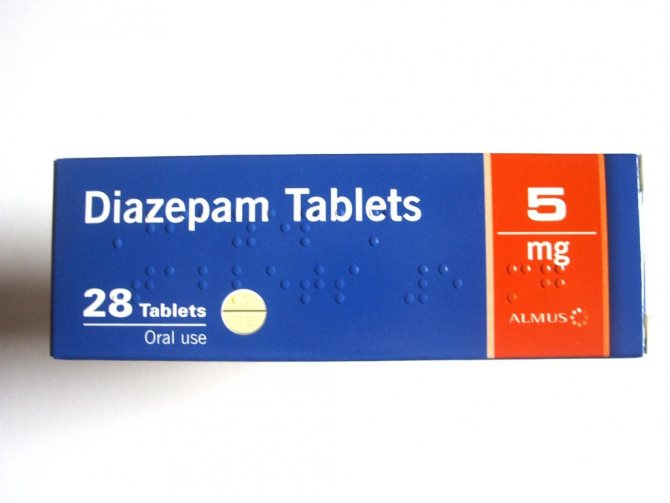
Diazepam helps cope with anxiety
Tricyclic antidepressants belong to an older group of drugs, but they are very effective. The effect occurs after 3-4 weeks of use. The course of treatment is from six months to 10 months. When treating, dosage rules should be applied: the initial dose should be up to 2/3 of the required dose. Within 2 weeks the maximum dose is reached. After the attacks disappear, a maintenance dosage is prescribed. The withdrawal of the drug occurs gradually.
- Imipramine is an anti-anxiety agent that stabilizes emotions;
- Clomipramine – weak sedative effect, increases emotional lability;
- Desipramine – enhances motivation and emotional sphere.
MAO inhibitors are rarely prescribed due to many side effects, but are good when PA is caused by VSD and there is no effect from tricyclic antidepressants: Moclobemide - improves sleep and attention, Pyrazidol - improves mood. Drugs of this group cannot be combined with others, so as not to cause a hypertensive crisis.
Serotonin reuptake inhibitors (SSRIs) are modern antidepressants with a high anti-panic effect. The presence of a small number of contraindications allows them to be prescribed even for organic diseases of the heart and lungs:
- Fluoxetine – reduces the concentration of serotonin, anxiety;
- Sertraline – removes anxiety and fear;
- Fluvoxamine is an anti-panic drug;
- Paroxetine is a strong anti-panic drug;
- Citalopram has an anti-anxiety effect, reduces the feeling of fear.
Anxiolytics:
- Afobazole and Grandaxin – strong anti-panic effect;
- Atarax – for initial and mild panic attacks;
- Clonazepam – sedative, anti-anxiety, relaxant;
To improve brain activity, nootropics : Glycine, Mexidol, Lecithin. If the patient has cardiac pathology, beta blockers are prescribed in combination, which not only have a beneficial effect on the heart, but also block catecholamines, preventing the development of PA:
- Anaprilin - slows the heartbeat and lowers blood pressure;
- Egilok - reduces stimulation of the heart and nervous system.
Psychotherapeutic assistance consists of the use of behavioral therapy, hypnosis, various analytical methods, family therapy, etc. This is the main method in the treatment of panic attacks.
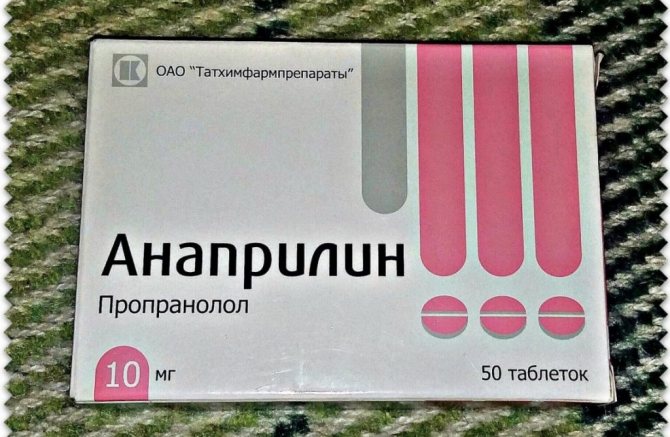
Anaprilin helps lower blood pressure and normalizes heartbeat
In order to learn how to prevent panic attacks, you need to learn to accept them as a given, understand that they will not immediately cause significant harm to your health. Learn to cope with stress and try to live in a good mood and lead a healthy lifestyle.

